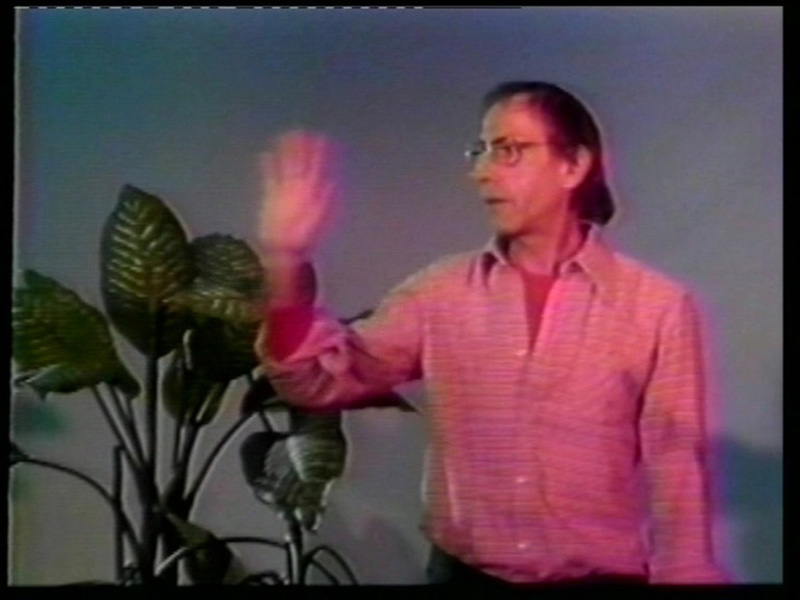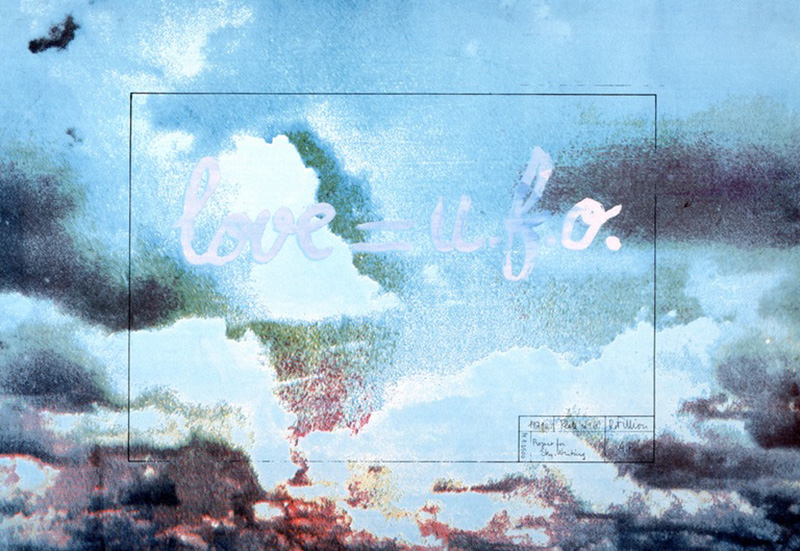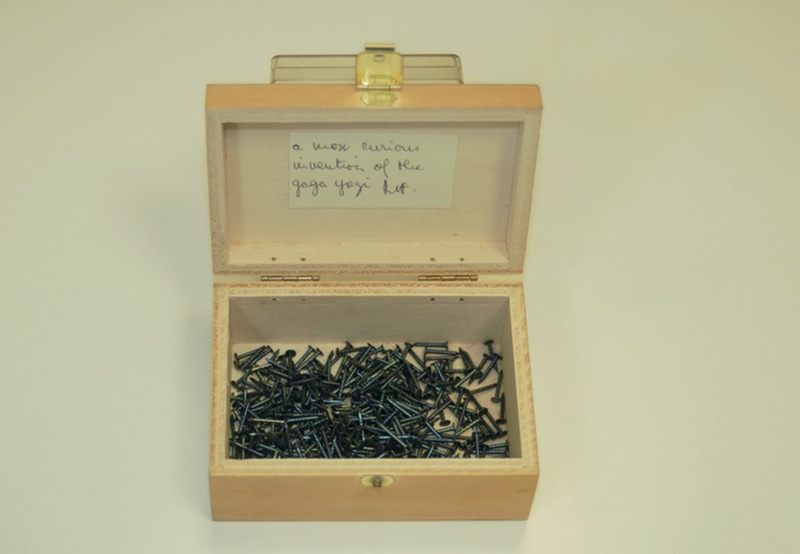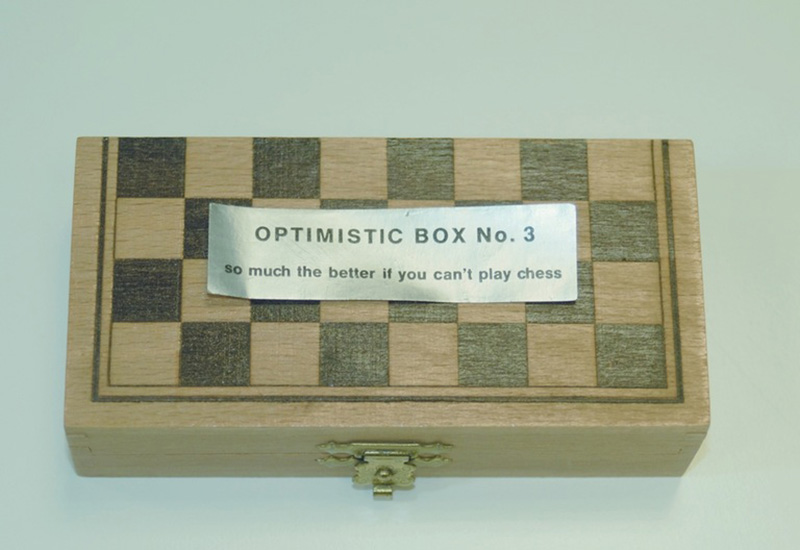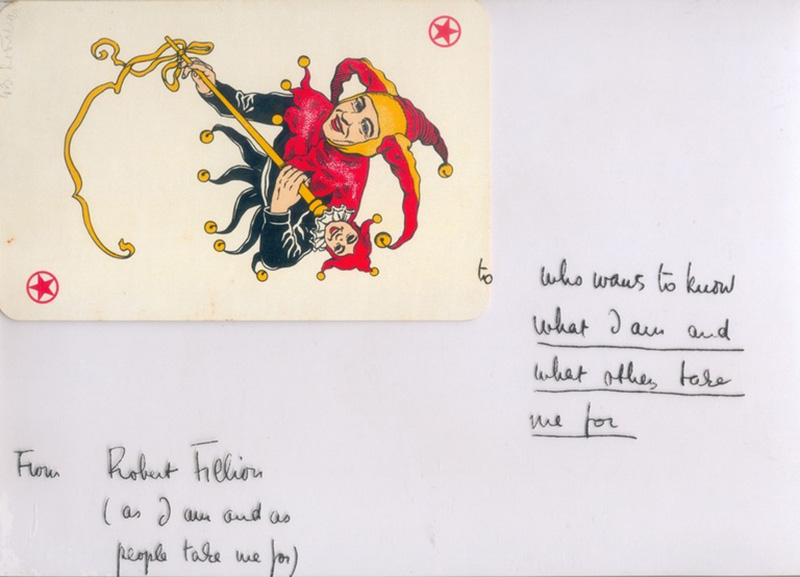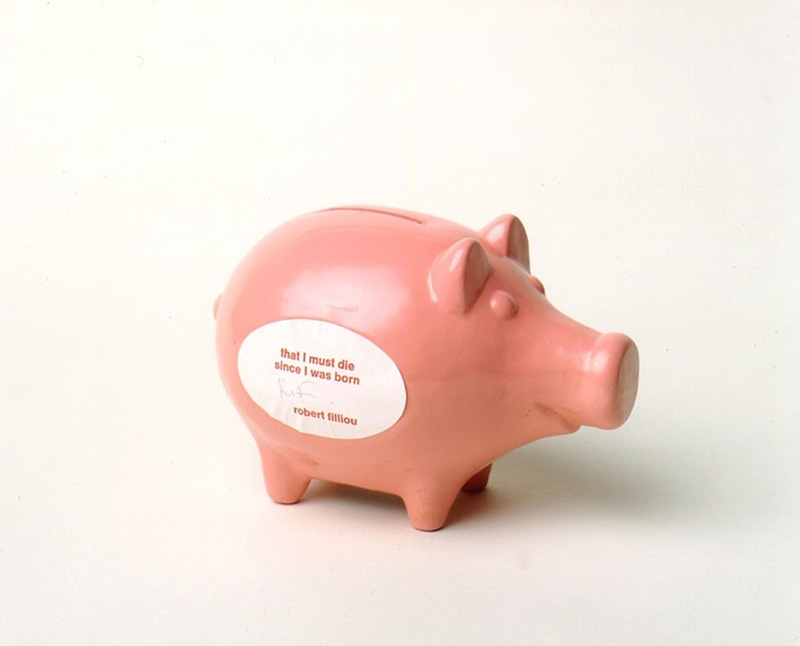ART-PRESENTATION: Robert Filliou
 Robert Filliou, a member of Fluxus, the ‘60s group that specialized in esthetic nonevents, believed that art didn’t have to express itself in the form of objects. He saw it as a form of play that could even occur as unrealized notions. His minimal-impact works are apt to be made of string, cardboard and wood, the vehicles for stray, vaguely poetic ideas and images. Filliou’s ephemeral works undermine heavy notions of what art is or should be.
Robert Filliou, a member of Fluxus, the ‘60s group that specialized in esthetic nonevents, believed that art didn’t have to express itself in the form of objects. He saw it as a form of play that could even occur as unrealized notions. His minimal-impact works are apt to be made of string, cardboard and wood, the vehicles for stray, vaguely poetic ideas and images. Filliou’s ephemeral works undermine heavy notions of what art is or should be.
By Dimitris Lempesis
Photo: M HKA Archive
The exhibition “Robert Filliou The Secret of Permanent Creation” occupies the main exhibition floor of Muhka Museum of Contemporary Art. Robert Filliou was born in the south of France, at the age of 17 he was part of the Resistance, he worked as a labourer for Coca Cola in Los Angeles, achieved a masters in economics. He joined the team of United Nations economists and co-authored A Five-Year Plan for the Reconstruction and Development of South Korea in 1953. The year after he abandoned this career and began his own itinerant, often precarious existence as a man of what he called “Joint works”, ideas created and visualised in close collaboration with words, physical materials (including all kinds of found objects) and most importantly other people. Among Filliou’s many close companions and collaborators were the artists Daniel Spoerri, Dieter Roth and Marcel Broodthaers, the artist and composer George Brecht, the artist and poet Emmett Williams and the architect and artist Joachim Pfeufer. Filliou’s visual oeuvre began in 1960 with “L’Immortelle Mort du Monde”, a graphic representation of an aleatory theatre play, and ended in 1987 with “Time in a Nutshell”, short pieces of writing on small pieces of paper sealed inside cracked walnuts. Writing is almost always on display in Filliou’s work, as part of the image or image- object. The work from the ‘60s, when he maintained an on–off relationship with the Fluxus Movement, could be described as poetic, not least because he often used his preferred materials (paper, cardboard, wood, canvas) as support for words. The “Suspense poems”, sold by mail order, are good examples of this. The various boxes also incorporate written messages, nodding to Fluxus but also, inevitably to Marcel Duchamp. He identified three kinds of art practice: art as creativity, anti-art (consisting of disseminating the works resulting from such creativity) and non-art, meaning “To create without worrying about the dissemination or non-dissemination of works”. From the late ‘60s onwards, Filliou explicitly visualised this principle in several key works, classifiable as sculptures or installations or videos. In 1963, with the architect Joachim Pfeufer, he created the “Poïpoïdrome” project, a meeting place and centre for “Permanent Creation” located at the crossroads between two currents: action and reflection. The multi-book “Teaching and Learning as Performing Arts” (1970) was conceived as a joint work between Filliou and the reader, exploring problems of Teaching and Learning in fields such as action poetry, games and street theatre. In the late ‘70s Filliou also launched a “Video Universecity” planned to span a period of five billion years. Towards the mid ‘80s Filliou focused more and more interest on meditation, but also revisited some topics from earlier stages of his “non-career” as a visual artist, among them violence/innocence. The idea to launch an international Biennial of the Art of Peace evokes works such as “Seven Childlike uses of Warlike Material” (1970) an installation of found objects and series of prints) or “COMMEMOR” (1970) a proposal to exchange war monuments between European countries who were once enemies).
Info: M HKA Museum of Modern Art, Leuvenstraat 32, Antwerp, Duration: 13/10/16-22/1/17, Days & Hours: Tue-Wed & Fri-Sun 11:00-18:00, Thu 11:00-21:00, www.muhka.be
